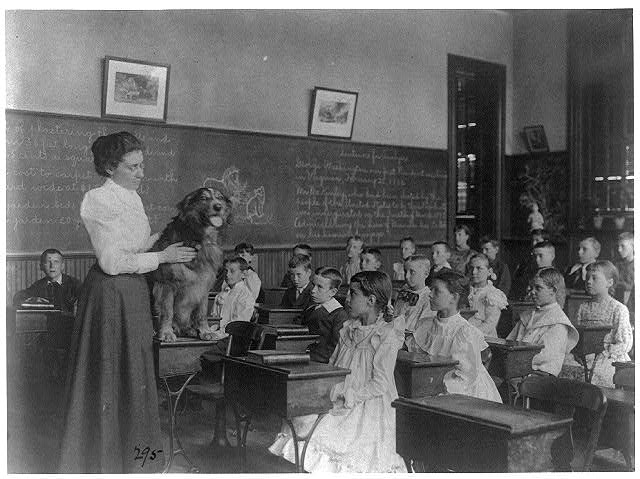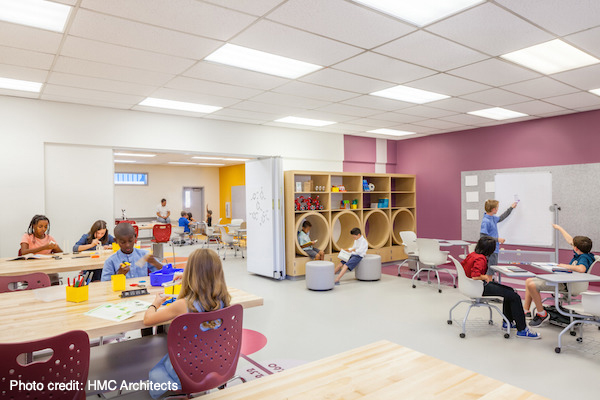In 2009, I tried to peek around the corner and predict what classrooms and technologies use might look like in 2020. That post forecasted a few changes that I then saw emerging. So there is nothing magical about that or what I predicted. The questions I asked at the end of the post, however, I still believe are most relevant in 2021.
I offer this twelve year-old post simply because re-visiting what I predicted can keep one humble. I have been way off on many earlier forecasts and laughed at how narrowly I looked ahead to the spread of classroom technologies, especially during the 2020-2021 pandemic–a traumatic event that appared in no one’s crystal ball.
However, on a few occasions, I was accurate. At least in part.
I just read a list of high-tech tools that have become obsolete in the past decade (e.g., floppies, fax machines). I used many of these myself and remember junking them, saying to myself: hey, these were highly touted, I bought the second- or third-generation version and now I am dumping them (of course, in an ecologically correct manner). Still the number of high-tech machines and applications that hit their expiration date so quickly stunned me.
Then I read another list of high-tech predictions for 2020 that was equally entertaining about the future of schools, well, not schools as we know them in December 2010. This list posted by a high-tech enthusiast who yearns for a paperless society and totally customized instruction with smaller, greener schools tickled me because while I do agree with some of the items, others are, well, dreams. I have been reading such lists (here) for years with high-tech devices having different names but a glorious future just around the corner. Last year, I posted my predictions for high-tech in schools in 2020. Here is, in part, what I said in 2009.
“Clear trend lines for U.S. classrooms in the next decade are hand-held mobile devices (iPhone, Blackberry, e-book variations) and online learning (distance education).”
HANDHELDS
Handhelds will permit the digitizing of texts loaded on to the devices. Student backpacks will lighten considerably as $100 hardbound books become as obsolete as the rotary dial phone. Homework, text reviews for tests, and all of the teacher-assigned tasks associated with hardbound books will be formatted for small screens. Instead of students’ excuses about leaving texts in lockers, teachers will hear requests to recharge their Blackberries, iPhones, etc.
Based on current Twitter and other future social networking traffic, shorter and shorter messaging will also become a mainstay of teacher-student communication. Some sample Twitter messages:
*In a college course on consumer sciences, the professor asked his 250 students to post questions on Twitter. On the topic of car insurance for those under 25 years of age, a student asked: ‘What happens if you get married and then get divorced at 24? Would your insurance go up?’ ”
*In the same course, during an exam, a student tweeted a fellow student and asked for the answer to a question. Teacher caught the student because although the software said “anonymous” on the handheld, the name of the student showed up on the teacher’s screen.
ONLINE COURSES
Proponents talk about how this form of teaching and learning as a powerful innovation that will liberate learning from the confines of brick-and-mortar buildings. Estimates (and predictions) of online learning becoming the dominant form of teaching turn up repeatedly and, somehow, fade. Surely, there will always be students and adults drawn from rural, home schooled, and adult populations that will provide a steady stream of clients for online courses. Nonetheless, by 2020, well over 90 percent of public school students will be in places called schools going at least 180 days a year to self-contained classrooms where a teacher will be in charge.
The error that online champions make decade after decade (recall that distance learning goes back to the 1960s) is that they forget that schools have multiple responsibilities beyond literacy. Both parents and voters want schools to socialize students into community values, prepare them for civic responsibilities, and yes, get them ready for college and career. Online courses from for-profit companies and non-profit agencies cannot hack those duties and responsibilities.
So by 2020, uses of technologies will change some aspects of teaching and learning but schools and classrooms will be clearly recognizable to students’ parents and grandparents. Online instruction will continue to expand incrementally but will still be peripheral to regular K-16 schooling. End of prediction.”
***********************************************************************************
Of course, I could be just another one of those benighted folks who predicted that automobiles, planes, and television were mere hype and would never replace horse-drawn carriages, trains, and radio. Here is a list of those failed predictions to chuckle over as you ring in the new year.
Whatever your guesses are for next year or for 2020, the questions that need answers are not about the rapid expiration dates of the next newest device –including the “revolutionary” iPad–nor to what degree technology will be ubiquitous in home and school nor even how new technologies will be used by the next generation of teachers and students. No, those are not the questions that need to be asked.
Instead, fundamental questions have to deal with matters of educational philosophy–what knowledge is most worth? Why? What are the best ways of teaching and learning? These questions, in turn depend on broader moral and political questions about what is the “good” life and how does one live a useful and worthy life. When these questions are asked and answered then, and only then, can new technologies play their proper role in schools and classrooms.















